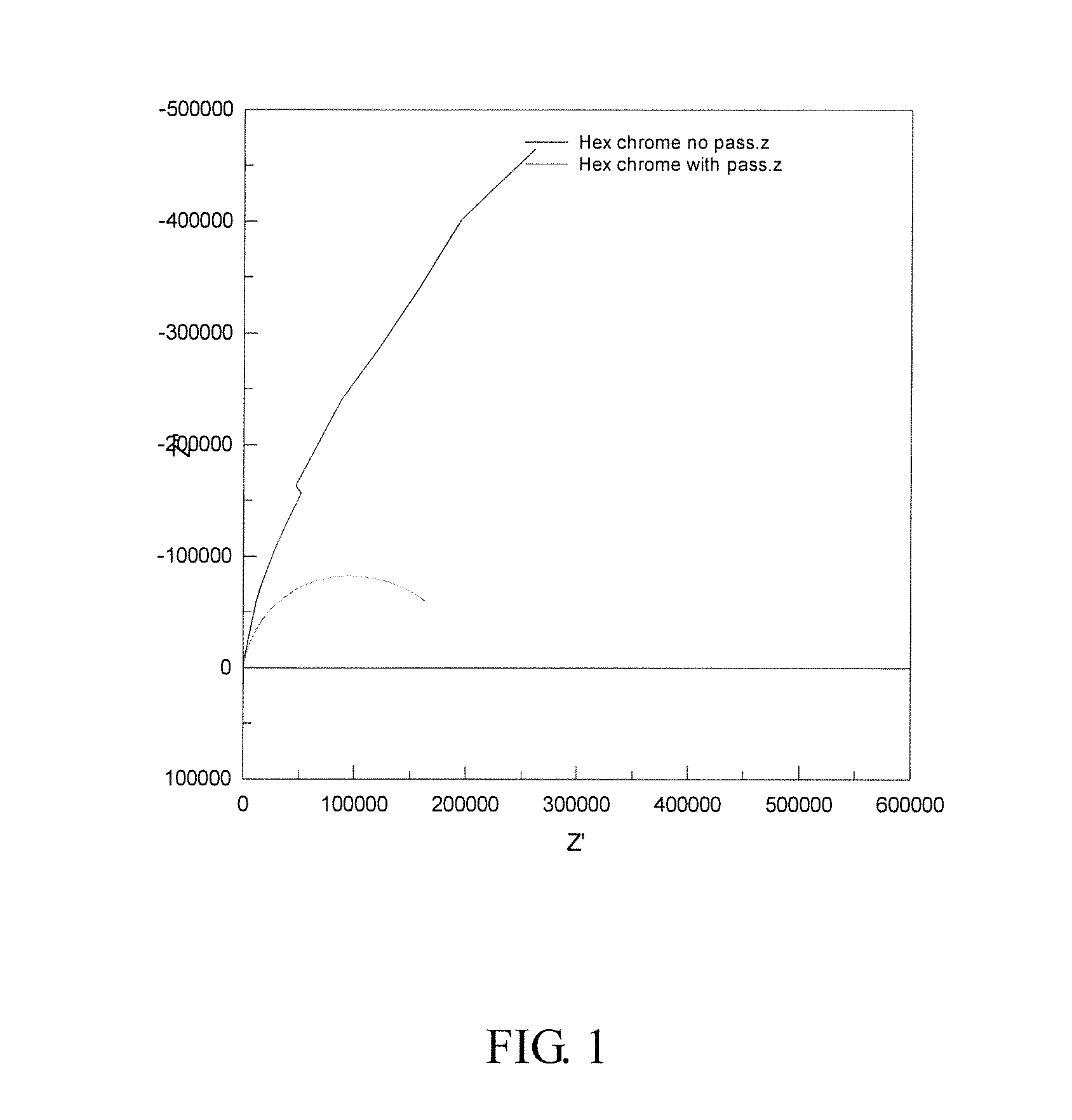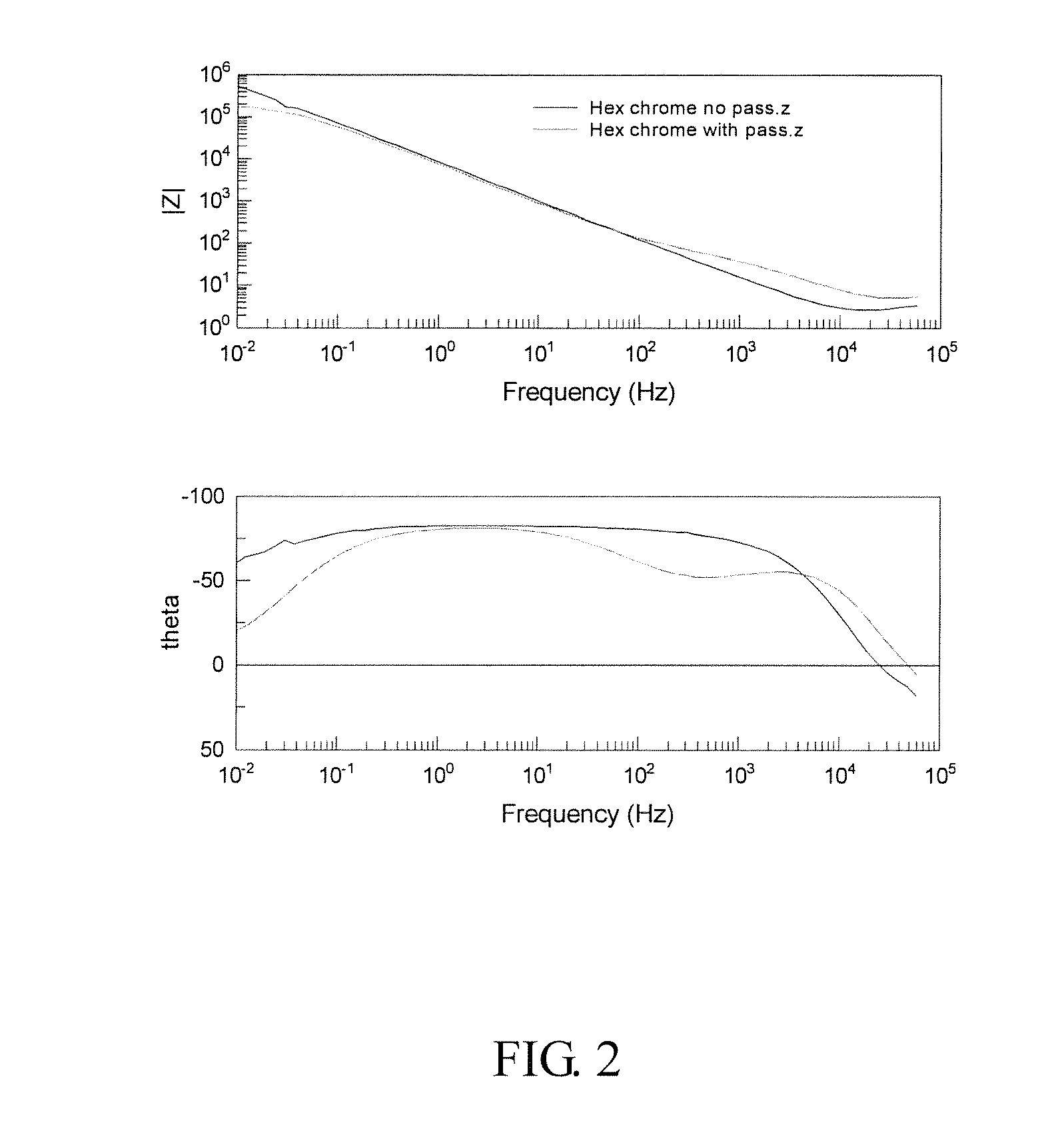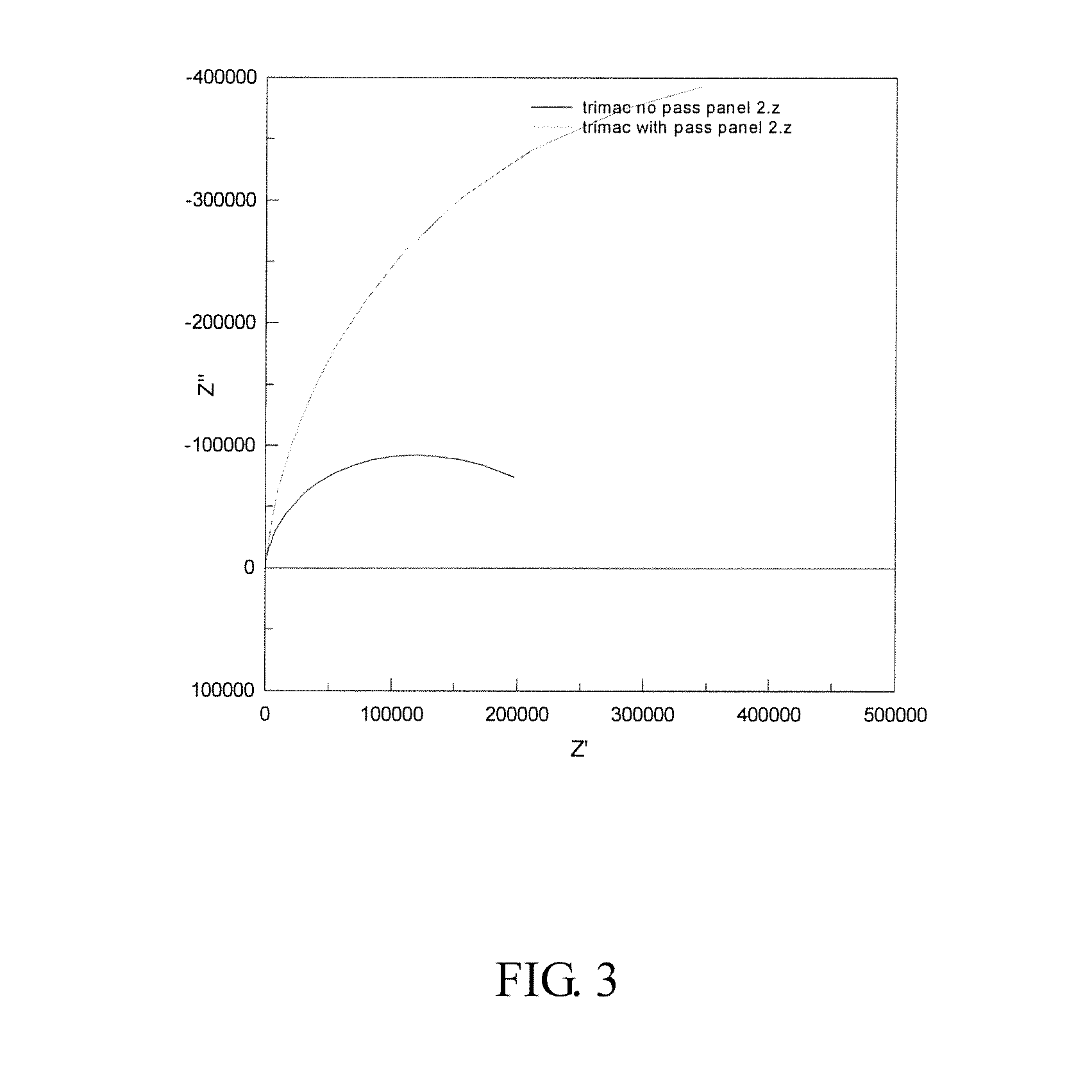Passivation of Micro-Discontinuous Chromium Deposited From a Trivalent Electrolyte
a technology of trivalent electrolyte and micro-discontinuous chromium, which is applied in the direction of electrolytic inorganic material coating, electrolysis apparatus and processes, transportation and packaging, etc., can solve the problems of chromic acid being extremely corrosive and toxic, affecting the appearance of the deposit, and reducing the effect of corrosion protection
- Summary
- Abstract
- Description
- Claims
- Application Information
AI Technical Summary
Benefits of technology
Problems solved by technology
Method used
Image
Examples
example 1
[0047]Test panels were prepared in the same manner as in Comparative Example 1 except that the chromium coating was applied from a trivalent electrolyte (Trimac III, available from MacDermid, Inc.). This produces a chromium coating containing up to 2% sulfur and also having up to 0.5% carbon codeposited with the chromium, effectively making it an alloy. Again, two panels were left unpassivated and two were passivated using the same process as described in Comparative Example 1. Again, EIS was used to examine the panels to determine the polarization resistance.
[0048]The results of these tests are shown in FIGS. 3 and 4 (Nyquist and Bode plots).
[0049]Here, it can be seen that the situation is reversed and that the passivated panel has the higher polarization resistance. This is supported by the bode plot which again shows the two time constants for the passivated panel and only one for the unpassivated panel. In this case, the calculated values of the polarization resistance are 1.8×1...
example 2
[0050]Test panels were prepared in the same manner as in Comparative Example 1 except that the chromium coating was applied from a trivalent electrolyte (Trimac III, available from MacDermid, Inc.). One of the panels was left unpassivated, one was cathodically passivated in a solution of potassium dichromate and one was passivated using the process solution as described in Comparative Example 1.
[0051]The panels were exposed to a neutral salt spray accelerated corrosion test (ASTM B117) for 72 hours and the results were compared as shown in FIG. 5. As seen in FIG. 5, the unpassivated panel (left panel) showed major red rust corrosion and some red rust was also evident on the panel passivated in hexavalent chromium (center panel). By comparison, there was no corrosion evident on the panel passivated in accordance with the compositions described herein.
PUM
| Property | Measurement | Unit |
|---|---|---|
| Time | aaaaa | aaaaa |
| Time | aaaaa | aaaaa |
| Angle | aaaaa | aaaaa |
Abstract
Description
Claims
Application Information
 Login to View More
Login to View More - R&D
- Intellectual Property
- Life Sciences
- Materials
- Tech Scout
- Unparalleled Data Quality
- Higher Quality Content
- 60% Fewer Hallucinations
Browse by: Latest US Patents, China's latest patents, Technical Efficacy Thesaurus, Application Domain, Technology Topic, Popular Technical Reports.
© 2025 PatSnap. All rights reserved.Legal|Privacy policy|Modern Slavery Act Transparency Statement|Sitemap|About US| Contact US: help@patsnap.com



